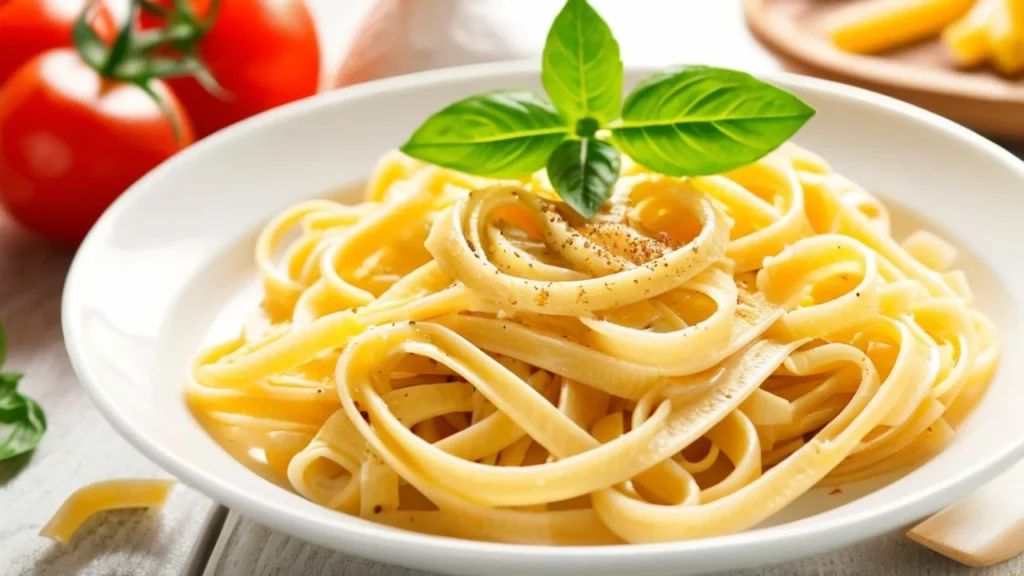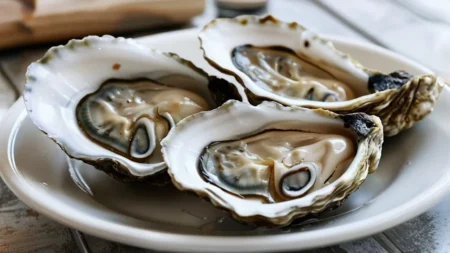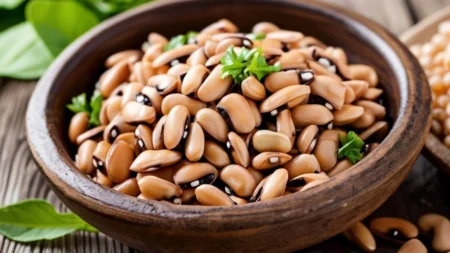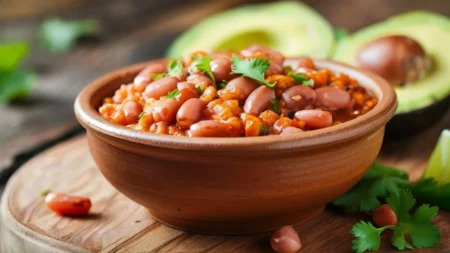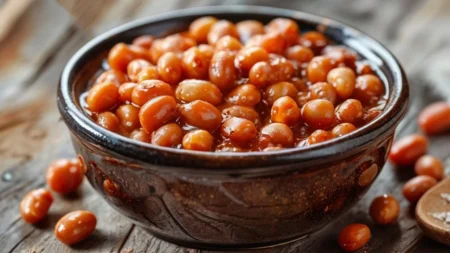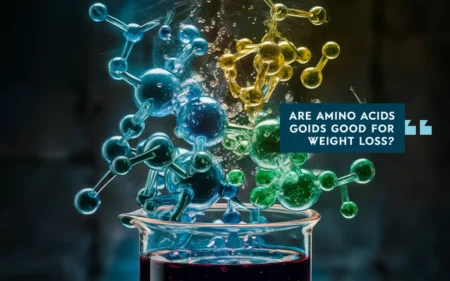Is Protein Pasta Good for Weight Loss?
Key Takeaways
- Protein pasta can support weight loss due to its higher protein content, which promotes satiety and helps maintain muscle mass.
- It typically contains fewer carbohydrates than traditional pasta, which can help control calorie intake.
- Protein pasta options made from chickpeas, lentils, or edamame offer added fiber, supporting digestion and reducing cravings.
- Portion control and the right pairing with healthy sauces and vegetables are essential for making protein pasta an effective part of a weight loss plan.
What Is Protein Pasta?
Protein pasta is a type of pasta that has been fortified with protein or made from ingredients that naturally contain more protein, such as chickpeas, lentils, or edamame. Unlike traditional pasta, which is typically made from refined wheat flour, protein pasta offers a higher protein content and sometimes more fiber, making it a popular choice for health-conscious individuals and those aiming to lose weight.
Types of Protein Pasta
There are different varieties of protein pasta available, and each offers varying nutritional benefits:
- Chickpea Pasta: Made from chickpeas, high in both protein and fiber.
- Lentil Pasta: Typically made from red or green lentils, offering a good balance of protein and complex carbs.
- Edamame Pasta: Made from edamame beans (immature soybeans), high in protein and lower in carbs.
- Wheat Protein Pasta: Traditional pasta that has been fortified with protein sources like pea protein or whey protein.
Nutritional Profile of Protein Pasta
The nutritional content of protein pasta varies depending on the type and ingredients. Here’s a general comparison of protein pasta made from chickpeas, lentils, and edamame compared to traditional wheat pasta:
| Nutrient | Chickpea Pasta (1 cup) | Lentil Pasta (1 cup) | Edamame Pasta (1 cup) | Traditional Pasta (1 cup) |
|---|---|---|---|---|
| Calories | 190-200 kcal | 180-190 kcal | 190-210 kcal | 220-240 kcal |
| Protein | 13-15 grams | 12-14 grams | 18-22 grams | 7-8 grams |
| Carbohydrates | 32-35 grams | 35-38 grams | 18-20 grams | 40-45 grams |
| Fiber | 6-8 grams | 5-7 grams | 12-13 grams | 2-3 grams |
| Fat | 2-4 grams | 1-3 grams | 4-5 grams | 1-2 grams |
Protein pasta offers almost double the protein and significantly more fiber than traditional pasta, both of which can support weight loss by promoting fullness and reducing calorie consumption throughout the day.
Benefits of Protein Pasta for Weight Loss
1. High Protein Content
Protein pasta can contain between 12-22 grams of protein per serving, which is significantly higher than regular pasta. Protein is key for weight loss as it:
- Increases satiety, making you feel full longer.
- Reduces the urge to snack between meals.
- Helps preserve muscle mass during weight loss, which is important for metabolism.
By switching to protein pasta, you can better control your hunger and maintain a calorie deficit.
2. Lower in Carbohydrates
Compared to traditional wheat pasta, protein pasta made from legumes like chickpeas or lentils contains fewer carbohydrates, ranging from 18-38 grams per serving. Lowering your carbohydrate intake can help reduce total calorie consumption, which is often essential for weight loss.
3. Rich in Fiber
Protein pasta also provides a high amount of fiber — typically 5-13 grams per serving. Fiber plays a crucial role in weight loss as it:
- Promotes digestion and regular bowel movements.
- Helps keep you full and satisfied, curbing overeating.
- Slows the absorption of sugar into the bloodstream, preventing blood sugar spikes that lead to cravings.
Fiber’s role in controlling appetite and improving digestion can make protein pasta a more effective choice than traditional pasta for weight loss.
4. Low Glycemic Index
Most protein pastas, especially those made from legumes, have a lower glycemic index compared to traditional wheat pasta. A low glycemic index means that the pasta causes a slower, steadier rise in blood sugar, preventing the sudden spikes that can lead to cravings and overeating. By keeping blood sugar levels more stable, protein pasta can reduce hunger and help you stick to your weight loss plan.
5. Keeps You Full for Longer
Due to its high protein and fiber content, protein pasta tends to keep you feeling full longer compared to traditional pasta. This can help reduce portion sizes and frequency of meals, which is essential when trying to create a calorie deficit for weight loss.
How to Incorporate Protein Pasta into a Weight Loss Diet
While protein pasta can be beneficial for weight loss, the way you prepare and serve it also matters. Here are some tips to maximize its effectiveness:
1. Watch Portion Sizes
Even though protein pasta is healthier than traditional pasta, portion control is still important. Stick to 1-2 cups per serving to keep your meal calorie-friendly.
2. Pair It with Lean Proteins
To further boost the protein content of your meal, pair protein pasta with lean proteins like grilled chicken, turkey, or shrimp. This will increase satiety and help you build or maintain muscle while losing fat.
3. Add Plenty of Vegetables
Increase the fiber and nutrient density of your meal by adding a variety of vegetables such as spinach, zucchini, bell peppers, or tomatoes. Vegetables add bulk to your meal without adding many calories, helping you feel full and satisfied.
4. Choose Low-Calorie Sauces
Opt for light, homemade sauces made from ingredients like tomato, olive oil, garlic, and herbs. Avoid creamy or high-fat sauces like Alfredo or heavy cheese-based sauces, as they can add significant calories.
5. Limit High-Calorie Add-Ons
Be mindful of extras like cheese, butter, or creamy dressings that can quickly increase the calorie content of your meal. Instead, enhance flavor with herbs, spices, or a sprinkle of Parmesan for a low-calorie topping.
Nutritional Comparison of Different Protein Pastas
Here’s a comparison of the nutritional value between chickpea, lentil, and edamame-based protein pastas:
| Protein Pasta Type | Calories | Protein | Carbohydrates | Fiber | Fat |
|---|---|---|---|---|---|
| Chickpea Pasta | 190 kcal | 13 grams | 32 grams | 6 grams | 2 grams |
| Lentil Pasta | 180 kcal | 12 grams | 35 grams | 5 grams | 1 gram |
| Edamame Pasta | 210 kcal | 22 grams | 18 grams | 12 grams | 4 grams |
As shown, edamame pasta tends to be higher in protein and fiber compared to chickpea and lentil pastas, but all options offer a nutritious balance that supports weight loss.
Conclusion
Protein pasta is a great alternative to traditional pasta if you’re looking to lose weight. Its higher protein and fiber content help promote fullness, reduce cravings, and maintain muscle mass, all essential factors in a successful weight loss plan. When eaten in moderation and paired with healthy, low-calorie ingredients like lean proteins and vegetables, protein pasta can be a valuable addition to your diet.
FAQ
1. Can I eat protein pasta every day for weight loss?
Yes, but moderation is key. Protein pasta can be part of a healthy weight loss plan if consumed in proper portion sizes and combined with low-calorie ingredients.
2. How does protein pasta compare to whole wheat pasta for weight loss?
Both protein pasta and whole wheat pasta have their benefits, but protein pasta typically contains more protein and fiber, which can be more beneficial for weight loss by promoting satiety.
3. Is protein pasta good for building muscle while losing fat?
Yes, the higher protein content in protein pasta can help support muscle maintenance and growth while you’re in a calorie deficit, making it an ideal food for both fat loss and muscle gain.
4. Does protein pasta taste different from regular pasta?
Protein pasta has a slightly different texture and flavor than traditional wheat pasta, especially those made from legumes like chickpeas or lentils. However, most people find it tasty and satisfying, especially when paired with flavorful sauces and vegetables.
5. Is protein pasta gluten-free?
Many protein pastas, such as those made from chickpeas, lentils, or edamame, are naturally gluten-free. Always check the label to ensure there’s no gluten-containing ingredients if you have gluten sensitivities or celiac disease.





